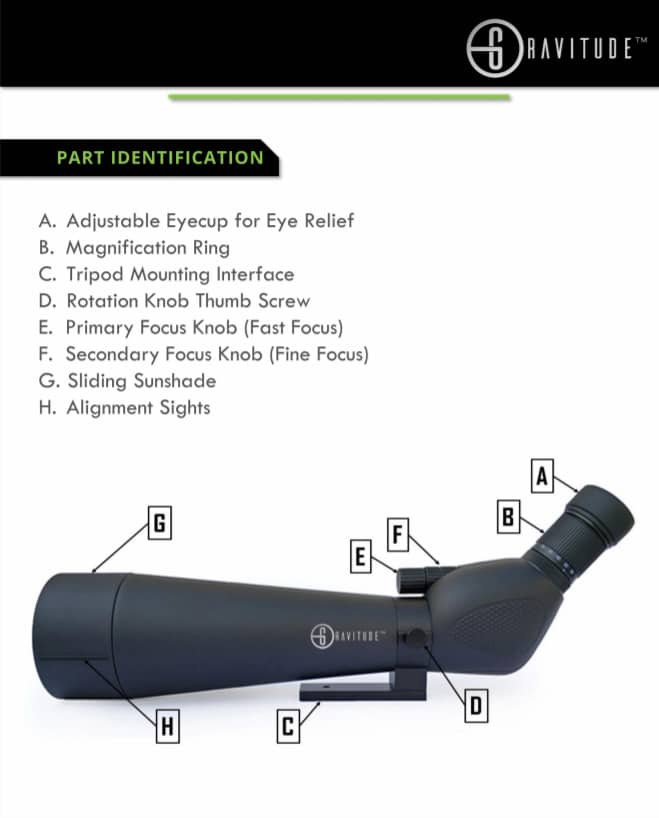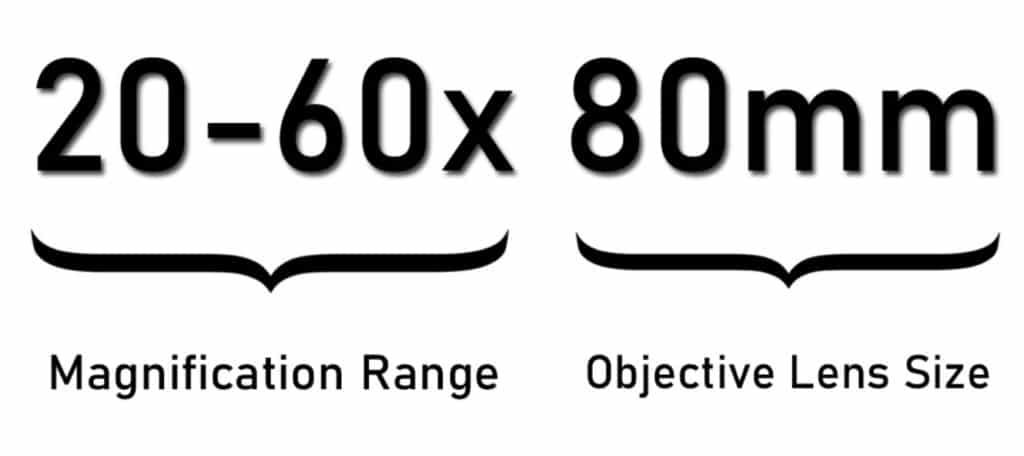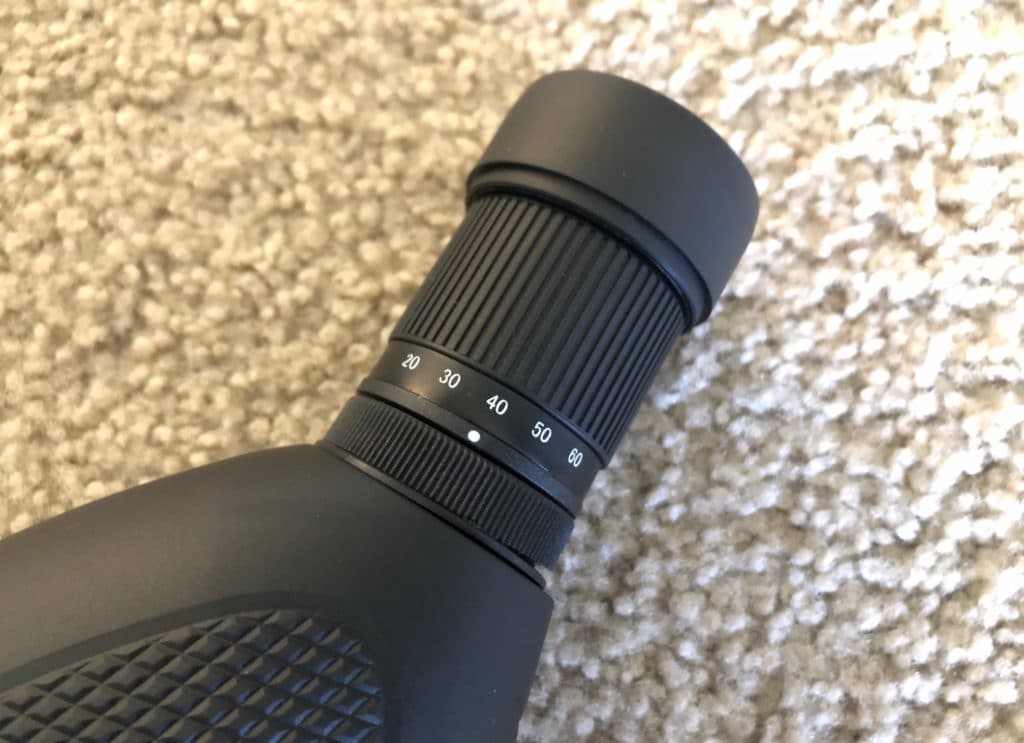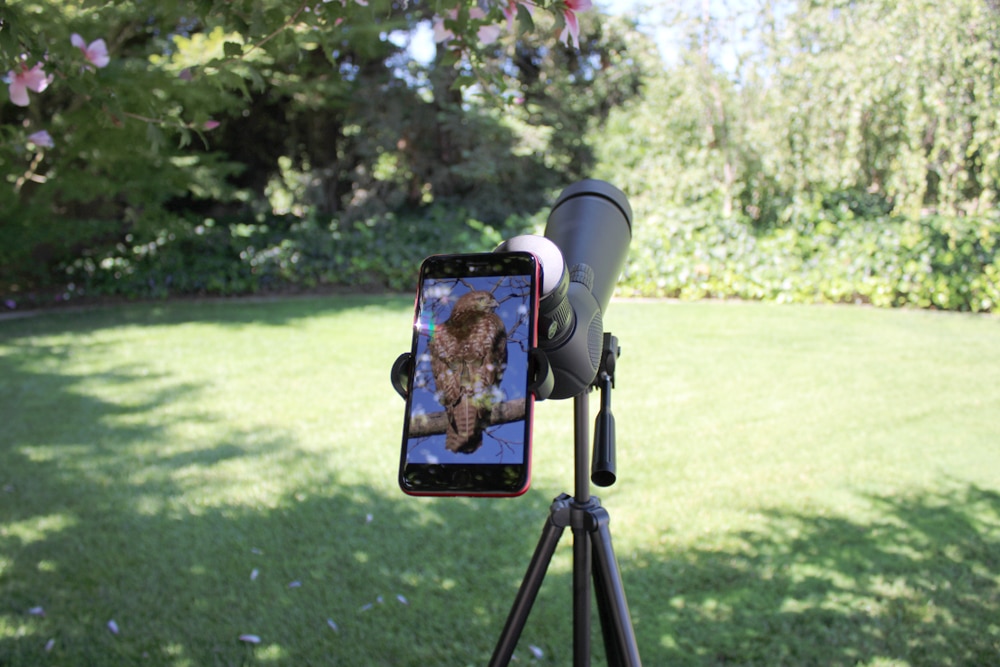Introduction
Are you into hunting, target shooting, bird watching, or any other recreation where magnified vision is required? Then you’ve probably thought about investing in a good pair of binoculars. But have you ever considered a spotting scope? In this guide, we’ll explain everything you need to know about spotting scopes in order to make an informed purchase.
What Are Spotting Scopes?

A spotting scope is a portable, high powered telescope most commonly used for magnified observation of terrestrial objects. They are commonly used in outdoor activities such as birdwatching, hunting, and target shooting.

Spotting scopes allow you to see clearly at magnifications and distances that are beyond the reach of even the best binoculars. Spotting scopes are mainly used on tripods which means that they have a more stable platform than binoculars.
What Do The Numbers Mean?

The most important number when looking at a spotting scope is the magnification. Spotting scopes come in a number of different magnifications. But there are other numbers that are just as important. A common number you will see is 20-60x80mm. That means that the scope has adjustable zoom magnification between 20x and 60x. Also, the scope has an 80mm objective lens size.
Magnification

Most spotting scopes come in magnification power from 20x to 60x. 20x is a significantly higher power than most binoculars, which are in the 6x-12x range. You won’t usually find them above 60x power because at that level of magnification, the image will begin to blur and image shake will occur even while using a tripod.
Objective Lens Size
Objective lens size refers to the lens that points at the object you are viewing. The larger the objective lens, the more light can be gathered and a clearer and more detailed image can be produced.
Lens Quality
Lens quality may be more important a factor to consider when deciding which spotting scope to purchase. When in doubt, go for the scope with higher quality lenses over a higher magnification but poorer lenses. This is because a high magnification with poor lenses will produce a poor image quality at a longer distance. The smaller magnification scope with better lenses will offer a clear, crisp image all the way up to its full magnification.
Chromatic aberration (or color fringing) is a problem that happens with lower quality lenses in scopes and binoculars. It happens when light is incorrectly refracted (bent) by the lens, resulting in mismatched colors at the focal point and an incorrectly colored image. Some ways to avoid this is HD and ED glass. HD is high definition glass and ED stands for extra-low dispersion glass. You will find these lenses in mid-level and higher-level optics.
What is the Best Magnification?
The range of magnification you will find that most spotting scopes fall into is between 20x and 60x magnification. Adjustable magnification scopes can be anywhere within that range, including from 20x to 60x in a single scope. Your magnification requirement is really based on what you intend to do with your scope. For the novice birdwatcher or average target shooter, a 20x scope should be sufficient. For tactical marksman or long-distance hunting, you will probably want an adjustable magnification scope. 20x-40x or 20x-60x should do just fine.
What Are Lens Coatings?
Lens coatings are a thin layer of chemical coating that is applied to the lenses of binoculars and spotting scopes to reduce reflective loss and improve light transmission. All lenses of the same size have the same light-gathering capacity, but different lens coatings can make a big difference in retaining that light. There are several different levels of lens coatings available.
Coated
A thin layer of anti-reflective chemical coating (usually magnesium fluorite) is applied to one or more lens surfaces.
Fully Coated
At least one thin layer of anti-reflective chemical coating is applied to both sides of the objective lens, both sides of the ocular lens, and the long side of the prism.
Multi-Coated
This means that there are multiple layers of anti-reflective coating on one or more lens surfaces.
Fully Multi-Coated
This is generally seen in the highest quality scopes available. This means that every lens surface has been coated multiple times with anti-reflective coating.
When To Choose Spotting Scope Over Binoculars?
This is a tricky question. Some people prefer binoculars over spotting scopes for the simple fact that they are familiar with them. They’ve held them before, some people for all of their lives. They are familiar with how to focus them, and comfortable looking through them and know how to quickly acquire their target, be it a bird or a deer, a silhouette target or an enemy combatant.
Generally, spotting scopes are used for distances and magnification that binoculars just can’t reach. Most binoculars are between 6x-12x magnification power. You can find some at 15x, 18x, and even 20x magnification, but they are usually much more expensive. Spotting scopes start at 20x magnification and go up to 60x. Also to consider, binoculars have smaller objective lenses than spotting scopes usually. This means less light-gathering capacity. So even if the magnification power is the same, a spotting scope with a larger objective lens will have a clearer, crisper image quality.
What Are Spotting Scopes Used For?
Spotting scopes are used to magnify images at distances or at magnification power that binoculars just cannot reach. The most common recreations that they are used in are birdwatching, long-range target shooting, hunting, and tactical shooting (sniper). For birdwatching, the spotting scope is best used at a location where birds are known to frequent, as opposed to when you go out looking for birds. Places like Cape May, New Jersey are famous for the multitude of species of birds that travel through there during migration.

A spotting scope can be helpful in identifying birds at distances that binoculars can’t reach. In target shooting and tactical shooting, the shooter views the target through his rifle scope while his spotter observes the target through a spotting scope. The spotter gives (or confirms) vital ballistic information such as distance, rise or drop, and wind speed and direction. In hunting scenarios, the spotting scope can be used to identify targets, then the hunter transitions to his rifle scope for the final shot.
Should I Choose An Angled or Straight Spotting Scope?
The body of the spotting scope comes in two main configurations, straight or angled. When deciding which one you need, it’s important to consider what you intend to use the scope for and how you will be using it. A scope with an angled neck is good for viewing things that are on the same plane as you are, or things higher (birds in trees for example). They are also good for viewing from a seated position such as in a car. A straight necked spotting scope is good for viewing objects that are on a lower plane, such as sitting on a mountain top and viewing the valley below. But both body styles can be used in any situation, so it ultimately comes down to personal preference.
What Other Features Should I Consider?
Besides magnification, objective lens size, lens coating, and body style, there are several other factors to consider before buying your spotting scope. Eye relief is one such consideration. Eye relief is the distance from the eyepiece your eyeball needs to be in order to see the entire field of view. Press your eye too close to the eyepiece, and you will lose some field of view. Similarly, if you pull your eye away too far, the entire picture will become smaller and you will lose clarity and detail.
Speaking of the eyepiece, be sure to check and see if the eyepiece is included in your purchase price. Some higher-end spotting scopes do not come with an eyepiece because it’s understood that you will buy a high-quality one separately. Most scopes, however, do come with their own eyepiece. It’s usually a non-movable eyepiece. If you are in the market for a high-end scope, you should definitely look at getting a zoom eyepiece. This will make your scope more versatile and give you better image quality.
Close focus is how close to you the scope will focus, as opposed to how far away. Most scopes will not focus closer than 20 feet away.
Lastly, make sure that you consider both fog proofing and weatherproofing when you are choosing your scope. Each of these is usually included in higher-end products, but not always for beginner scopes. Do your homework and make sure you know exactly what you are getting.
Do I Need To Use a Tripod With a Spotting Scope?
The short answer is “Yes”, you will most certainly need a tripod with your spotting scope. With the magnifications that spotting scopes come in, you will not be able to hold a spotting scope and get a clear image. A tripod is a must. Some spotting scopes will come with a tripod, but most won’t. Most likely you will need to buy one.
How To Consider Price vs Quality
Spotting scopes come in a wide variety of quality and costs. You can find a perfectly good entry-level spotting scope, but if you have the available budget, there are extremely high-quality scopes available.
When you look for your scope, make sure you consider the magnification, objective lens size, and lens coatings before you make a purchase.
Can You Take Pictures or Video With Them?
Spotting scopes are excellent for taking long-distance photographs and videos. In order to do that, you will need a special eyepiece adaptor that connects to your camera.
How Far Can Spotting Scopes See?
Spotting scopes are good for viewing objects over 100 yards, and depending on the size of the object, can see clearly 500 to 1000 yards or more. Many factors go into how clear
How Much Should I Spend On a Spotting Scope?
For an entry-level spotting scope, you can expect to spend $150 to $300. If you’re looking to spend a little more, you can get a really good scope for $500 to $700. For a top-quality scope, you will pay over $1000.
For most needs, we recommend the Gravitude Raptor HD Spotting Scope which is priced under $200. The scope has excellent glass and comes with a small tripod, a great looking carry case and a cellphone adapter for taking pictures and videos. Another great option is the Vortex Diamondback if you can afford the next step up.
Conclusion
If you are into bird watching, target shooting, or hunting, you should consider investing in a good quality spotting scope. It will allow you to see more clearly at higher magnification and longer distances than even the best pair of binoculars. Before you make your purchase, make sure that you check the magnification, objective lens size, lens quality, and lens coatings to make an informed decision. A good quality spotting scope should last you many years and bring you great enjoyment.
Caligunner Copyright © 2025.
All Rights Reserved. Caligunner.com is a participant in the Amazon Services LLC Associates Program, an affiliate advertising program designed to provide a means for sites to earn advertising fees by advertising and linking to amazon.com.

